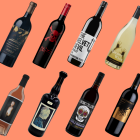Austrian glass-making dynasty Riedel has built a global empire on its baffling variety of stemware. The company makes specific glasses for every kind of wine, and vehemently maintains that glass shape has an indisputable impact on the wine-tasting experience. But that’s the premise behind their entire business, so of course they’d say that.
Others are not so sure. Vinepair, for example, says that “a glass of wine is going to taste just as good in a glass created specifically for that wine as it will in a tumblr”. Other experts agree that it comes down to the wine, not the glass. Indeed, Georg Riedel himself acknowledges that “a glass cannot change a wine from a bad wine to a good wine. We are not responsible for miracles.”
But for those in the ‘yes’ camp, what makes the difference? First, let’s look at the architecture of a wine glass, which comprises four parts: the base, the stem, the bowl and rim. Despite the popularity of stemless wine glasses among design-driven circles, most agree that the stem plays a crucial role in preventing direct contact between the drinker’s hand and the bowl, thus preventing heat-related effects on the wine.
The bowl is the main variable when it comes to stemware. Some believe that for the complexity of a red to be fully appreciated, a larger bowl is required, as it allows for easier swirling without spillage. Similarly, glasses designed for red wines tend to proffer a wider rim to allow a greater exposure to air. Allowing the wine to breathe helps tannins break down and improve the wine’s bouquet. For other wines – whites and sparkling varieties, for example – a smaller glass with a tapered rim will help to restrict and consolidate aromas. So this all comes down to the drinker’s ability to get their nose in the glass – smell is a critical part of the wine-tasting experience.
But what of direct tasting? The original idea behind fancy stemware like Riedel is that the shape of the glass directs the wine to hit one of the four taste ‘zones’ on your tongue when you sip, from sweet on the tip of the tongue, working backwards through salty, sour and eventually bitter, at the back. According to Riedel and other stemware advocates, getting the wine onto the appropriate part of the tongue for that first sip can make a tremendous difference to the way you experience the wine. Scientists, however, have largely disregarded this so-called ‘tongue map’, as our sense of taste has proven to be far more sophisticated.
So what’s the answer? Perception, mainly. Go for different glasses for red and white wines, based on the widely-accepted olfactory evidence, but beyond that the way you drink your wine is a matter of preference. If you choose a wine you know you enjoy, it won’t matter whether you drink it from a teacup or a tankard, but there’s no doubt that sipping it from an expensive glass will enhance the experience, even if it does nothing to the taste.






